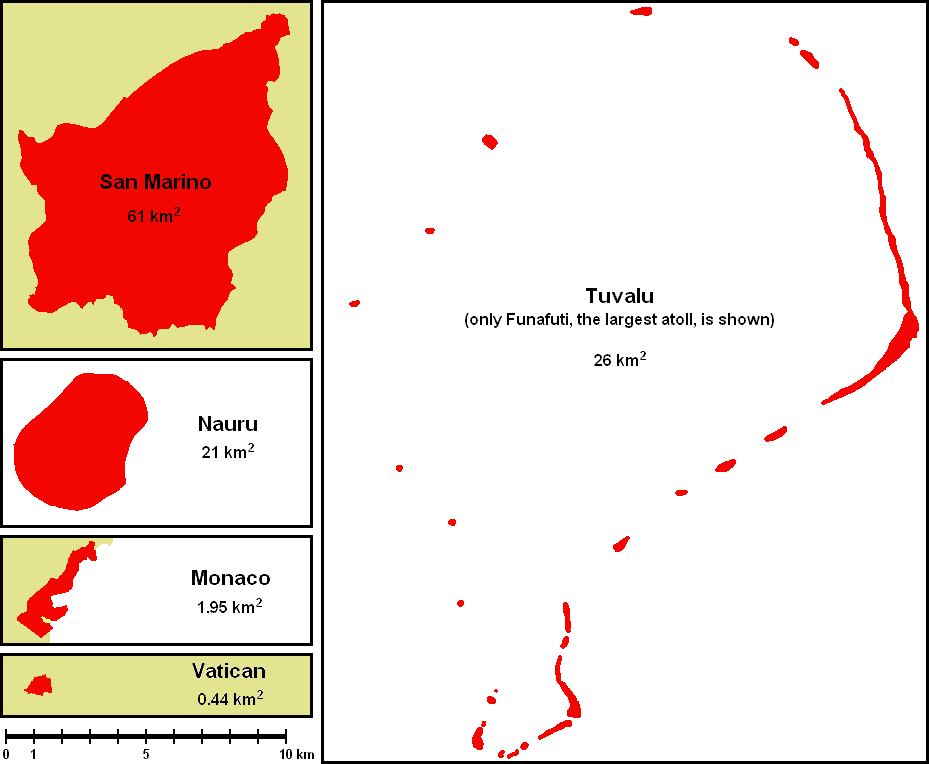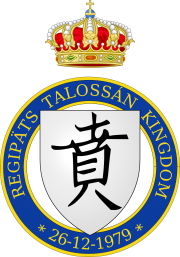Small Countries
Today, Very small countries. The University of Houston presents this series about the machines that make our civilization run and the people whose ingenuity created them.
Think about small countries: Iceland's fairly large, but with only a third of a million people. Singapore, with almost six million people, would easily fit inside Houston, Texas. Both appear on most lists of microstates. Luxembourg is a fortieth the size of Iceland, with twice its population. Yet, somehow, no one calls it a microstate. Microstates are clearly ill-defined.
Vatican City (with its zero birth rate) is the smallest microstate. Many are leftovers of European colonization. Nine small islands and atolls make up the Pacific nation of Tuvalu ' ten square miles and 12,000 people. Europe and the Pacific, are speckled with such fragments: Monaco, Andorra, Tonga, Cook Islands ...

Some typical microstates.
A microstate has to be recognized as a country by other nations if it's to qualify. And that brings up another classification -- what we call micronations self-declared countries that we simply ignore. Small groups constantly go off to declare themselves to be separate nations. And here the fun begins:
 Take this extreme case: Fourteen-year-old Robert Ben Madison formed the Kingdom of Talossa in 1979. It claims 255 citizens and an area of five square miles. So where is Talossa? Well it's in Milwaukee; but exactly where is unclear. It has its own language, flag, coat-of-arms, money, and a GDP just under a thousand dollars. Madison dis-established Talossa in 2005. But, by then, others claimed citizenship and carried on. It's still active with its own king and prime minister.
Take this extreme case: Fourteen-year-old Robert Ben Madison formed the Kingdom of Talossa in 1979. It claims 255 citizens and an area of five square miles. So where is Talossa? Well it's in Milwaukee; but exactly where is unclear. It has its own language, flag, coat-of-arms, money, and a GDP just under a thousand dollars. Madison dis-established Talossa in 2005. But, by then, others claimed citizenship and carried on. It's still active with its own king and prime minister.
Some such claims are far more serious. Take the State-of-Scott. Tennessee's Scott County lies on the Kentucky border. When the south seceded from the United States, the people of Scott decided they could not be part of it. So they claimed to be a separate state. That may've been more symbolic than real. Still, it stayed so for over a century.
But most micronations are pretty tongue-in-cheek. The Principality of Hutt River, Australia, formed when a farmer declared his farm to be its own country. It lingered as a tourist attraction until the Covid pandemic. Then it went broke.
Most micronations simply express some desire to be special. Take the Principality of Sealand: The British built an off-shore fort in the North Sea during WW-II. Its two connected towers served as a gun platform. Britain abandoned it after the war. Then one Paddy Roy Bates claimed it as his country, Sealand. And so it remains today. Paddy's son Michael is now its prince.
So what's going on here? I suspect we all feel a need to splinter into villages, units small enough that we can call them our own. I'm lucky enough to know and like my neighbors. I hope you are as well. Then you and I have no need to claim some new place, apart from the rest of the world.
I'm John Lienhard at the University of Houston, where we're interested in the way inventive minds work.
See the Wikipedia pages on Microstates and Micronations.
This list of micronations is also fun to read: https://en.wikipedia.org/wiki/List_of_micronations
Here is the home page of the Kingdom of Talossa. https://talossa.com/
Here is the story behind the Australian micronation that I mention: https://www.bbc.com/future/article/20220407-the-country-that-became-a-micronation-capital
My thanks to Richard Armstrong for his counsel. Richard chides me for failing to mention his favorite microstate, The Serene Republic of San Marino -- 24 square miles and some 34,000 people -- located just off the Northeast coast of Italy. He has a point, since it might be the oldest of microstates, having been founded in 301 CE.
Images courtesy of Wikipedia Commons.
This episode was first aired on on June 27, 2022.